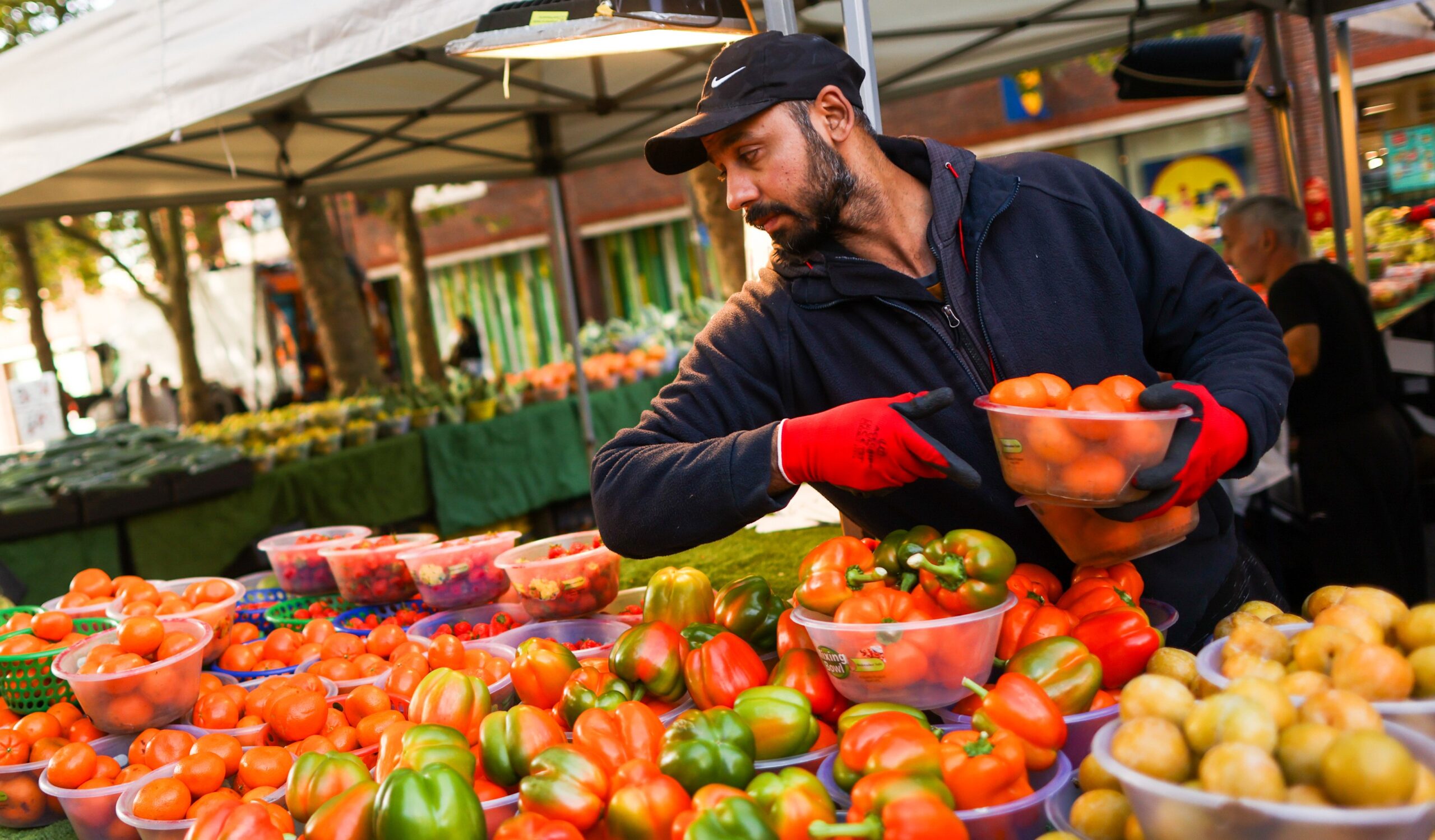Eating healthily has never been more expensive, according to research that highlights the “tragic imbalance” between food that is affordable and food that is good for us.
The study reveals that healthier food — based on its nutrient profile — is more than twice as expensive per calorie as junk food. Healthier options have increased in price at twice the rate of less-healthy options in the past two years.
It says the growing cost of eating well is exacerbating health inequality. The most deprived fifth of the population would need to spend 45 per cent of disposable income on food to meet the government-recommended healthy diet, rising to 70 per cent for households with children.

Children from the most deprived households eat 20 per cent less fruit and vegetables than wealthy children
CHRIS RATCLIFFE/BLOOMBERG/GETTY IMAGES
The study, published by the Food Foundation, says the cost imbalance between healthy and junk foods is damaging the nation’s health, with the least well off suffering the most.
It says that children from the most deprived fifth of households consume 20 per cent less fruit and vegetables than those from the wealthiest fifth, and are nearly twice as likely to be obese. Deprived groups are also much more likely to be affected by type 2 diabetes and tooth decay.
Advertisement
• Poor twice as likely to attend A&E as ‘vicious cycle’ costs NHS billions
The study also reveals that food manufacturers and retailers were much more likely to promote unhealthy foods. Only 2 per cent of all food advertising was for fruit and vegetables, while more than a third was for confectionery, snacks, desserts and soft drinks.
The report also noted that a quarter of places to buy food in England were fast-food outlets, rising to a third in the most deprived areas.

Anna Taylor, of the Food Foundation, said: “Our Broken Plate report sadly shows that our food system is failing to provide large swathes of the population with the basic nutrition needed for them to stay healthy and thrive.
“There is a tragic imbalance in the UK between the food that is marketed, available and affordable, and foods that are healthy and sustainable. Often it is the most vulnerable children in our society who suffer the worst consequences of this. Not only can lack of nutrition lead to serious health conditions, it can also lead to children being unable to concentrate in school and have lasting negative impact on mental health, entrenching inequalities from a young age.”
Advertisement
• Councils given powers to ban takeaways near schools
This week, the health secretary, Wes Streeting, is expected to respond to a previous report from the House of Lords committee on food, diet and obesity, which called for the government to fix the “broken food system”. The government recently also started work on a national food strategy.
Henry Dimbleby, the former food tsar and author of the most recent national food strategy, said Britain stood at a “critical moment”.
He said: “As the government rolls out its new food strategy, addressing the incentives that drive the sale and aggressive marketing of unhealthy foods must be a top priority. The human and economic toll is too great to ignore any longer.”
The Food Foundation wants Labour to develop new taxes to encourage businesses to reformulate food and drink in a similar way to the soft drinks levy. It also wants VAT removed from healthy meals in restaurants and fast-food outlets, and restrictions on unhealthy food advertising.
Advertisement
Daniel Zeichner, the minister for food security and rural affairs, said the government’s cross-party food strategy was designed to “ensure our food system can continue to feed the nation, realise its potential for economic growth, protect the planet, and nourish individuals”.
He added: “We cannot do this alone, which is why we are working with those across the food sector, utilising their expertise, to transform the industry for good.”
